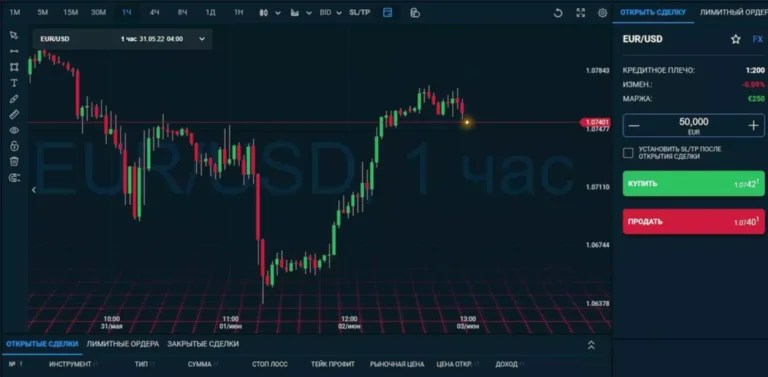So what’s really happening is that miners exchange energy for cryptocurrency, which causes PoW mining to use as much energy as some small countries. The network should theoretically become safer now that it’s now more expensive to validate transactions on the blockchain. If you want to activate validator software, you will have to stake 32 ETH (a hefty price that fluctuates depending on the price of 1 ETH). Since the Constantinople upgrade, miners who successfully create a block were rewarded with two freshly minted ETH and part of the transaction fees.
● A few blockchains distribute rewards directly to the delegator, but don’t automatically calculate and send commission to the validator operator. To compensate for the cost of running the server, the delegator will pre agree to pay the validator a small percentage of any rewards distributed from the network. Provider data on stakingrewards.com suggests this amount is usually less than 10%.
If a pair of checkpoints attracts votes representing at least two-thirds of the total staked ETH, the checkpoints are upgraded. The earlier of the two is already justified because it was the “target” in the previous epoch. In principle, a small group of people could take the reins and switch Bitcoin to proof of stake. Since it is an open-source project, Bitcoin’s development relies on decisions made by the community, which in theory includes anyone who wants to participate. Stakers will also earn rewards in the form of fees and MEV when proposing blocks, which are made available immediately via the set fee recipient address. After the blockchains merge, Ethereum will introduce sharding, a method of breaking down the single Ethereum blockchain into 64 separate chains, which will all be coordinated by the Beacon Chain.
The node then adds the accurate block to the blockchain in exchange for crypto rewards. On the flip side, if a validator adds an inaccurate block, they lose some of their staked crypto. Before the Merge, you had to go through the energy-intensive process known as proof-of-work (PoW) to create Ethereum tokens. PoW is the original consensus mechanism for verifying transactions that bitcoin used. Under the PoW mechanism, miners compete to solve complex mathematical problems.
Explainer: Understanding Ethereum’s major ‘proof of stake’ upgrade
Investors are betting the change will be significant for the price of ether, which has gained more than 50% since the end of June, compared to a slight loss for bitcoin. High costs and slow transaction times are currently two of the main issues users have with the Ethereum network. Efforts to crack down on Bitcoin’s waste are gaining steam in the US as well.
Bitcoin Cash did launch, as a fork in the Bitcoin software in August 2017. But the majority of the miners and developers stuck with the traditional chain, and Bitcoin Cash became just another Bitcoin spinoff. Even today, Bitcoin promoters refer to Bitcoin Cash as a “rebellion” and a “corporate takeover,” as opposed to a sincere effort to improve Bitcoin’s usability. Vitalik Buterin, Ethereum’s creator, always intended for Ethereum to use proof of stake. The trade-off here is that centralized providers consolidate large pools of ETH to run large numbers of validators. This can be dangerous for the network and its users as it creates a large centralized target and point of failure, making the network more vulnerable to attack or bugs.
Crypto-economic security
Ethereum’s mechanism has other drawbacks—it’s tediously slow, averaging 15 transactions per second. CryptoKitties, a game where players breed and trade cartoon cats, caused a transaction pileup on the network in 2017. Like Bitcoin, Ethereum once used a proof-of-work (PoW) based consensus protocol. Learn more about proof-of-stake and how it is different from proof-of-work.

Controlling 51% of all staked coins on the network is so difficult that it makes such an attack extremely unlikely. This is how the consensus mechanism that secures Proof of Stake networks works. Both PoW and PoS are types of consensus mechanisms that allow cryptocurrency networks to operate with no central governing authority.
Proof-of-work and mining
Using this common history, they assess whether new blocks of transactions are valid. Then vote on this point as a group before adding them to the main chain. Staking is the act https://www.xcritical.in/ of depositing 32 ETH to activate validator software. As a validator you’ll be responsible for storing data, processing transactions, and adding new blocks to the blockchain.
Whichever miner solves the problem first is allowed to add a block of transactions that earns them rewards. The consequence of this process is that mining devices worldwide compute the same problem, which uses a substantial amount of energy since mining requires lots of electricity. Both consensus mechanisms help blockchains synchronize data, validate information, and process transactions. Each method has proven successful at maintaining a blockchain, although each has pros and cons.

Additionally, find out the issues proof-of-stake attempts to address within the cryptocurrency industry. The cryptocurrency space has been concerned with how SEC regulations could impact the market. If this merger were to lead to SEC regulations, it would shake the entire crypto market. Increased scrutiny and regulations have also been an ongoing fear for crypto enthusiasts. Sign up for free online courses covering the most important core topics in the crypto universe and earn your on-chain certificate – demonstrating your new knowledge of major Web3 topics. Ethereum originally launched a separate proof-of-stake Beacon Chain on December 1, 2020.
That signal alone may prove transformative for the Web3 industry, which is still getting steady VC investment and could find new fuel in buoyed public perception. The amount of ETH slashed depends on how many validators are also being slashed at around the same time. It is imposed halfway through Ethereum Proof of Stake Mode a forced exit period that begins with an immediate penalty (up to 1 ETH) on Day 1, the correlation penalty on Day 18, and finally, ejection from the network on Day 36. They receive minor attestation penalties every day because they are present on the network but not submitting votes.
- But there are also punishments for validators who are deemed lazy or malicious, including the loss of up to their full deposit.
- Vitalik Buterin, Ethereum’s creator, always intended for Ethereum to use proof of stake.
- Whereas under proof-of-work, the timing of blocks is determined by the mining difficulty, in proof-of-stake, the tempo is fixed.
- To “buy into” the position of becoming a block creator, you need to own enough coins or tokens to become a validator on a PoS blockchain.
- The node then adds the accurate block to the blockchain in exchange for crypto rewards.
Ommer blocks were valid blocks created by a miner practically at the same time as another miner created the canonical block, which was ultimately determined by which chain was built on top of first. The proof-of-stake mechanism radically changes how the Ethereum blockchain works. It eliminates the need for mining new blocks as the network is now secured using staked ETH and validators. To apply to be a validator, one must run proper client software, and deposit—or “stake”—32 Ether (about $49,000 at current prices) on the network. Prospective validators will then be added to an “activation queue that limits the rate of new validators joining the network,” as the Ethereum Foundation explains.
One validator is randomly selected to be a block proposer in every slot. This validator is responsible for creating a new block and sending it out to other nodes on the network. Also in every slot, a committee of validators is randomly chosen, whose votes are used to determine the validity of the block being proposed. Dividing the validator set up into committees is important for keeping the network load manageable.
Miners work to solve for the hash, a cryptographic number, to verify transactions. Validators are selected randomly to confirm transactions and validate block information. This system randomizes who gets to collect fees rather than using a competitive rewards-based mechanism like proof-of-work. If Ethereum were to be considered as a security, then ether and every application on the blockchain would have to get registered with the SEC. It would also mean that Ethereum was trading as an unregistered security for a long time which could lead to some hefty fines for Ethereum and possibly the platforms that allowed trading.
Any system that uses proof of work will naturally re-centralize. But it’s an approach that’s fraught with complications, given platforms’ whims and proliferating scams. There’s a new version of this page but it’s only in English right now.
